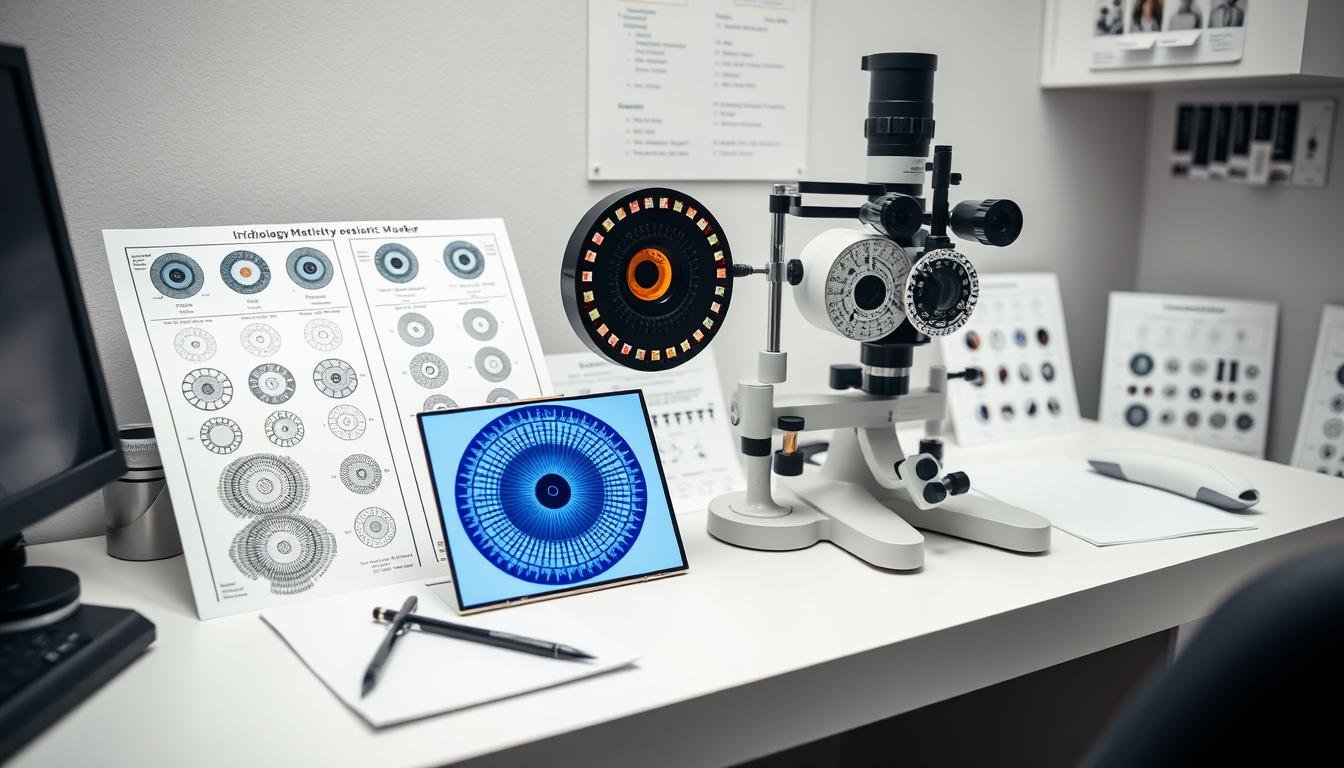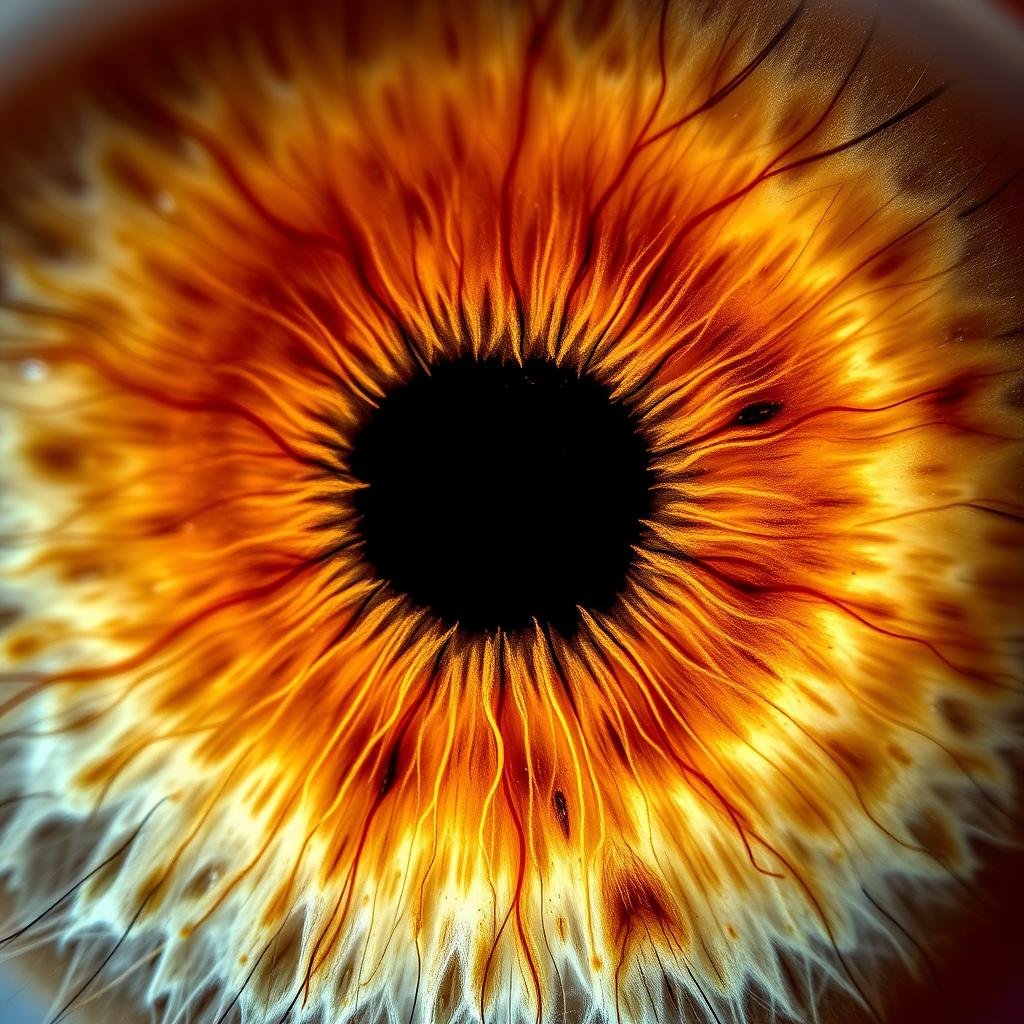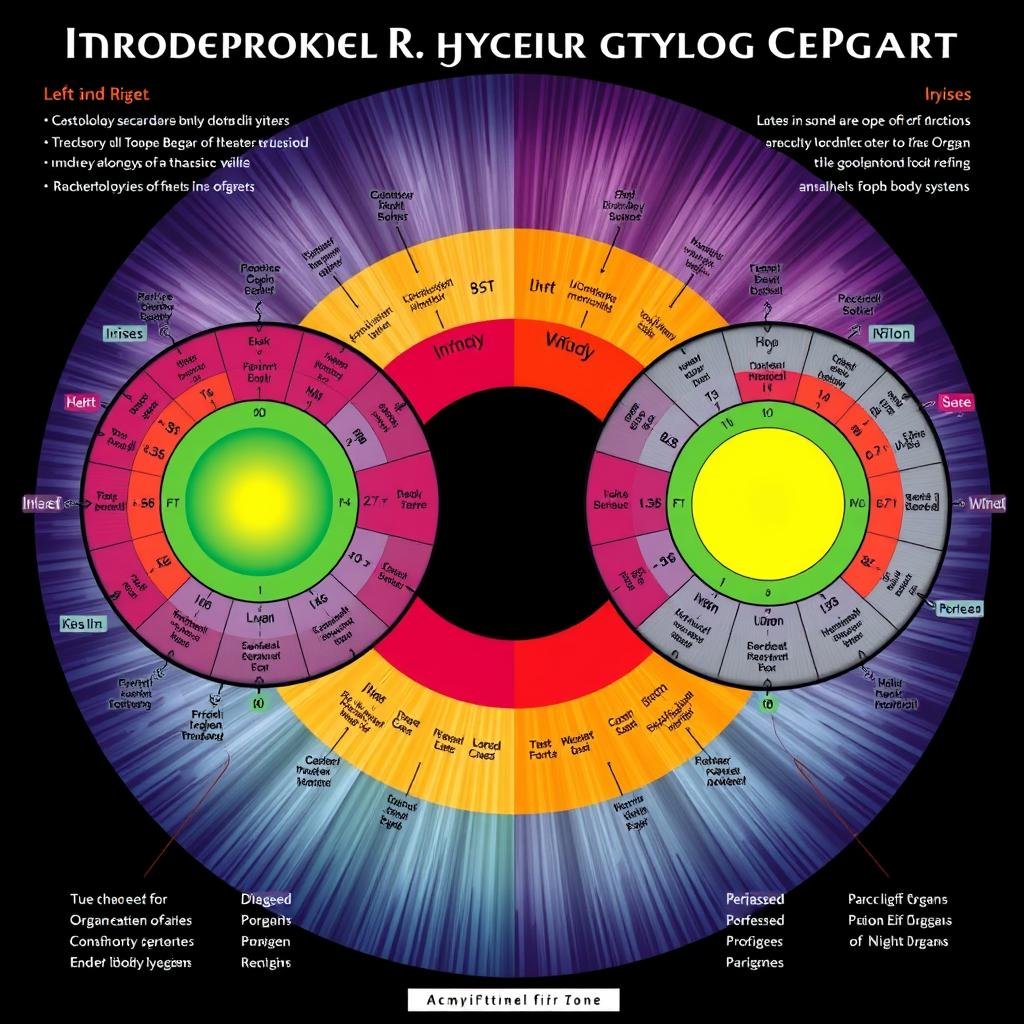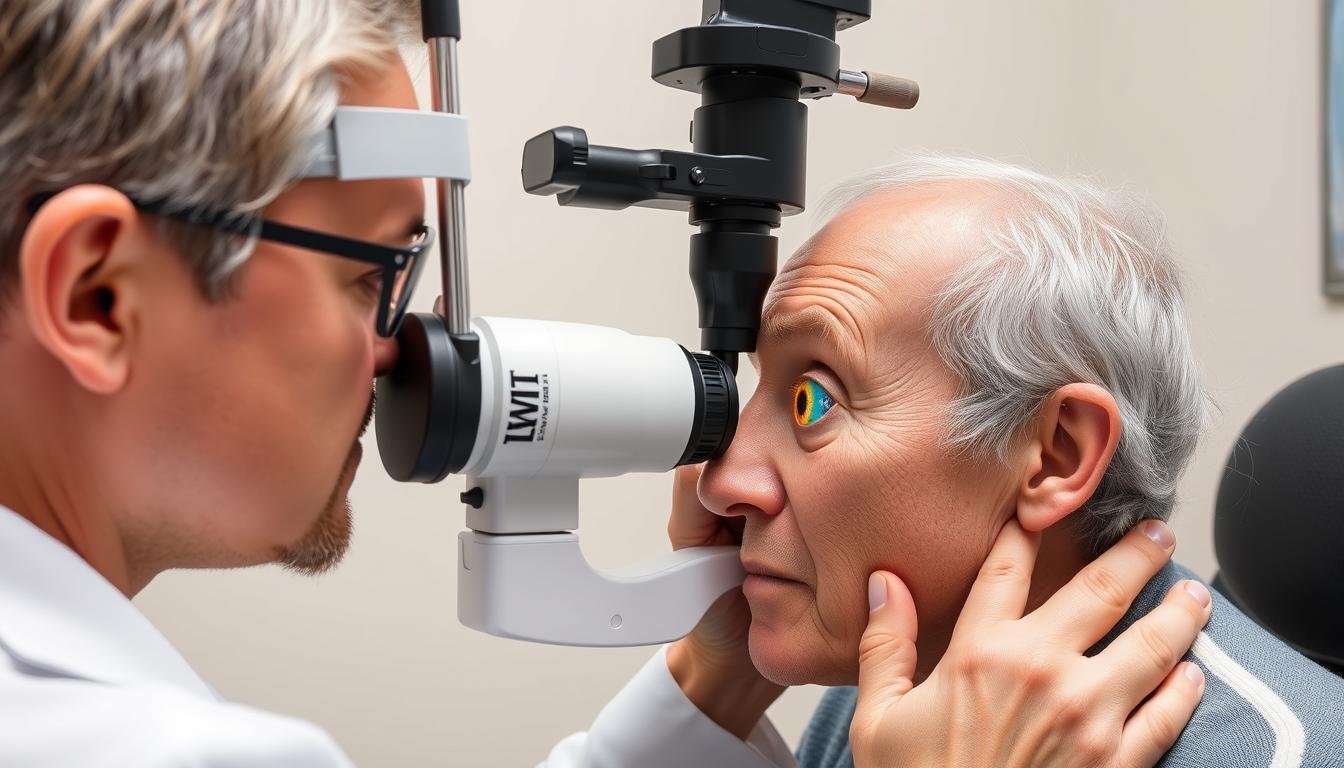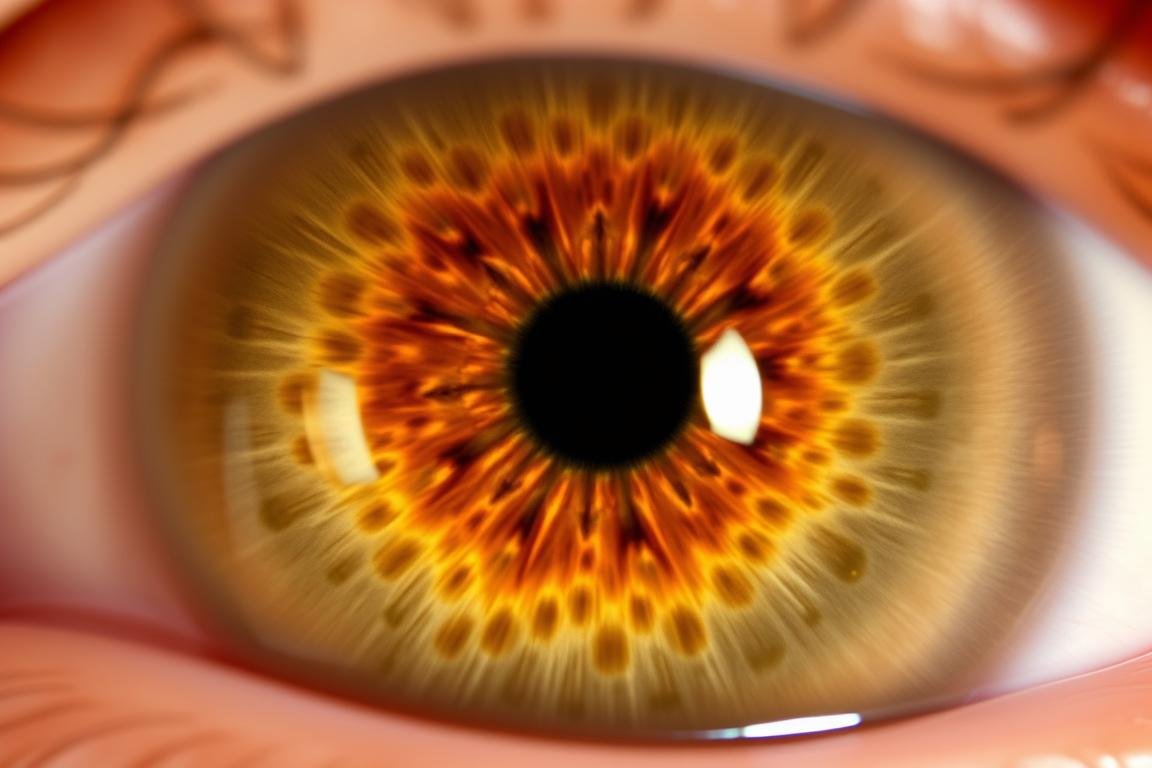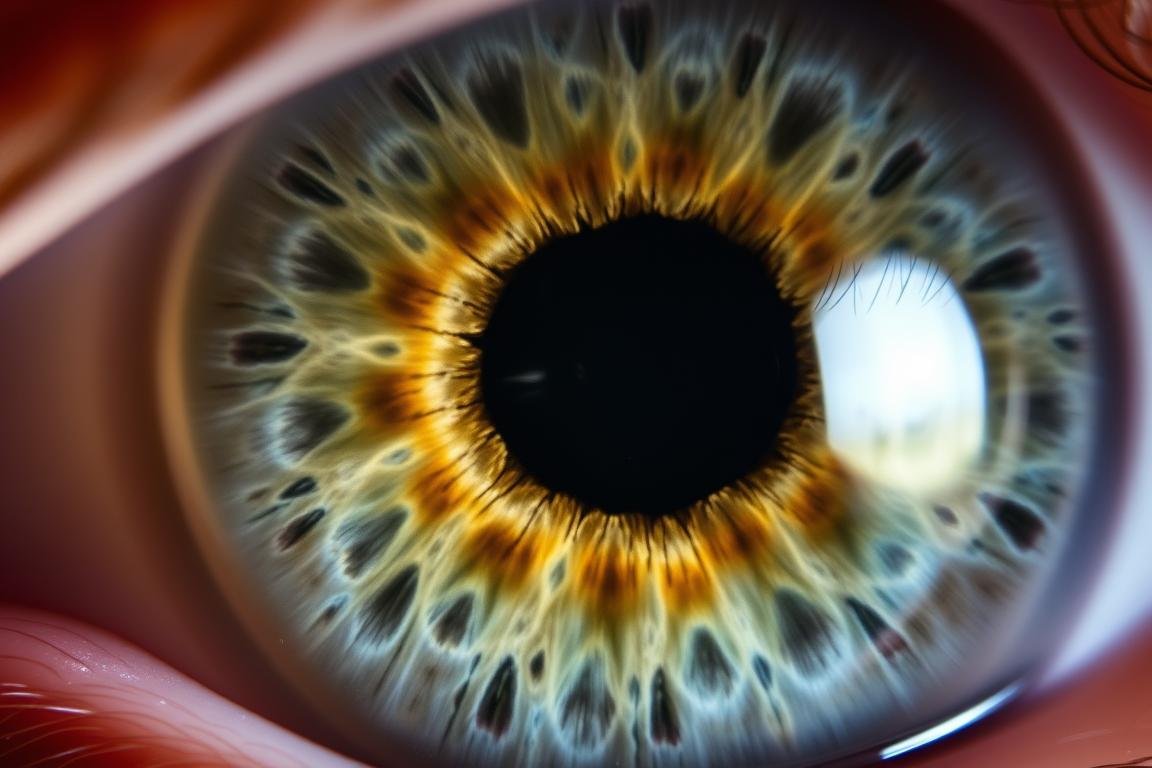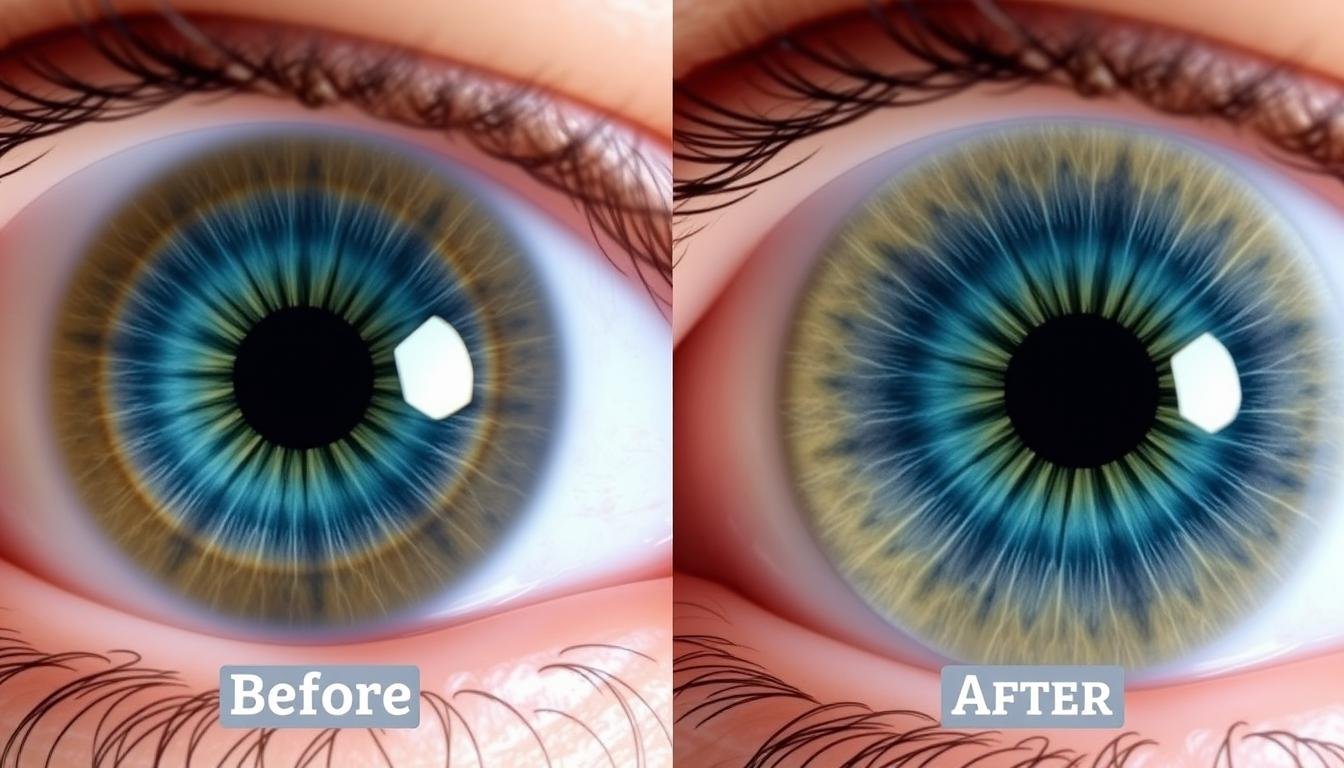Iridology Iris Diagnose-Die menschliche Iris-dieser farbenfrohe Teil Ihres Auges-hat seit Jahrhunderten faszinierte Praktiker der alternativen Medizin. Die Iridologie, auch als Iris -Diagnose bekannt, ist die Praxis, die Iris zu untersuchen, um potenzielle gesundheitliche Probleme im gesamten Körper zu identifizieren. Befürworter der Ansicht, dass jeder Bereich der Iris bestimmten Organen und Körpersystemen entspricht, wobei Änderungen der Irismuster potenziell zugrunde liegende Gesundheitsprobleme signalisieren, bevor die Symptome an anderer Stelle auftreten. Konventionelle Medizin bleibt skeptisch, und die Iridologie erhält bei denjenigen, die sich für ganzheitliche Ansätze für die Bewertung der Gesundheitsbewertung befinden, weiter an Beliebtheit. Dieser Artikel untersucht die Prinzipien, Methoden und Kontroversen, die diese faszinierende diagnostische Technik umgeben.
Einführung in die Diagnostik der alternativen Medizin
Alternative diagnostische Methoden wie Iridologie bieten unterschiedliche Ansätze zur Gesundheitsbewertung
Die alternative Medizin umfasst eine breite Palette von diagnostischen Techniken, die sich von herkömmlichen medizinischen Ansätzen unterscheiden. Diese Methoden konzentrieren sich häufig auf die Identifizierung von Ungleichgewichten oder potenziellen Gesundheitsproblemen, bevor sie sich als klinische Symptome manifestieren. Von der Pulsdiagnose der traditionellen chinesischen Medizin bis zur ayurvedischen Dosha -Bewertung teilen diese Praktiken eine ganzheitliche Philosophie, die den Körper als miteinander verbundenes System betrachtet.
Iridology Iris Diagnose-Iridologie steht zu diesen alternativen diagnostischen Methoden als Technik, die eher visuelle Untersuchungen als invasive Verfahren verwendet. Praktizierende glauben, dass die Iris als dient als “Karte” des Körpers, wobei jeder Abschnitt verschiedenen Organen und Systemen entspricht. Durch die Analyse von Veränderungen der Iris -Muster, -farben und -markierungen wollen Iridologen Sorgebereiche und potenzielle Gesundheitslücken identifizieren.
Im Gegensatz zu herkömmlichen diagnostischen Tests, die auf bestimmte Bedingungen abzielen, behauptet die Iridologie, einen umfassenden Überblick über den Gesundheitszustand und die verfassungsrechtlichen Tendenzen einer Person zu geben. Dieser Ansatz entspricht der vorbeugenden Philosophie, die in vielen alternativen Gesundheitssystemen üblich ist.
Geschichte der Iridologie: Ursprünge des 19. Jahrhunderts

Ignaz von von Peczely wird als Vater der modernen Iridologie weithin zugeschrieben
Während einige Befürworter behaupten, dass vor über 3.000 Jahren Formen der IRIS -Untersuchung im alten Ägypten, China und Indien existierten, zeichnet die moderne Iridologie seine Wurzeln auf Europa des 19. Jahrhunderts nach. Die Praxis wird am häufigsten dem ungarischen Arzt Ignaz von Peczely zugeschrieben, der seine Theorien in den 1860er Jahren entwickelte.
Laut beliebten Berichten begann von Peczelys Interesse in der Kindheit, als er bemerkte, dass in der Iris der Eulen ein dunkler Streifen auftrat, nachdem der Vogel ein gebrochenes Bein erlitten hatte. Diese Beobachtung führte ihn dazu, eine Verbindung zwischen Irismarkierungen und physischem Trauma oder Krankheit zu hypothetieren. Als Arzt erweiterte er diese Theorie später, indem er seine Patienten untersuchte’ Iris und korrelierende Muster mit ihren bekannten Gesundheitszuständen.
1881 veröffentlichte von Peczely seine ersten Regionen der Iris -Chart -Mapping der Iris für bestimmte Organe und Körpersysteme. Etwa zur gleichen Zeit entwickelte der schwedische Homöopath Nils Liljequist unabhängig voneinander ähnliche Theorien, nachdem sie Veränderungen in seiner eigenen Iris nach Medikamenten mit Chinin und Jod beobachtet hatten.
Die Praxis verbreitete sich im frühen 20. Jahrhundert in ganz Europa, wobei deutliche Beiträge von deutschen Praktikern wie Pastor Emanuel Felke. In den Vereinigten Staaten erlangte die Iridologie in den 1950er Jahren durch die Arbeit von Bernard Jensen, einem Chiropraktiker, der Iris -Diagramme verfeinerte und die Praxis im Rahmen natürlicher Heilungsansätze förderte.
Kernprinzipien der Iridologie

Die komplizierten Muster der menschlichen Iris bilden die Grundlage der iridologischen Analyse
Die Iridologie basiert auf mehreren Schlüsselprinzipien, die die Praktiker in ihre Analyse führen. Das Verständnis dieser Konzepte bietet einen Einblick in die Annäherung an Iridologen -Diagnose:
Die Iris als Mikroomap
Iridologische Iris-Diagnose-Das grundlegende Prinzip der Iridologie ist, dass die IRIS als detaillierte Karte des gesamten Körpers fungiert. Es wird angenommen, dass jeder Bereich der Iris bestimmten Organen, Drüsen und Körpersystemen entspricht. Diese Zuordnung folgt einer logischen Anordnung, wobei Bereiche oben auf der Iris und denjenigen, die die Füße unten darstellen, den Kopf darstellen.
Verfassungsbewertung
Iridologen glauben, dass die Grundstruktur und Farbe der Iris die genetischen Veranlagungen einer Person und inhärente Stärken oder Schwächen aufdecken. Es wird angenommen, dass diese konstitutionellen Faktoren darauf hinweisen, welche Körpersysteme zusätzliche Unterstützung erfordern oder anfällig für bestimmte gesundheitliche Probleme sind.
Reflexive Beziehung
Nach der Iridologie -Theorie verbindet sich die Iris durch das Nervensystem mit allen Körpergeweben und zeigt Veränderungen als Reaktion auf Gewebebedingungen an. Diese reflexive Beziehung ermöglicht es den Iris angeblich, als Indikator für Veränderungen im gesamten Körper zu dienen.
Toxinakkumulation
Viele Iridologen glauben, dass spezifische Markierungen in der Iris die Ansammlung von Toxinen oder Abfallprodukten in entsprechenden Körpergeweben anzeigen. Diese Markierungen können als Verfärbungen, Flecken oder strukturelle Veränderungen in den Irisfasern erscheinen.
Diese Prinzipien bilden die theoretische Grundlage für die Iridologiepraxis, obwohl es wichtig ist, dass sie nicht durch konventionelle medizinische Forschung validiert wurden.
Iris -Diagramm -Mapping: Organkorrelationen

Iridology -Diagramm -Zuordnung bestimmter Iriszonen zu entsprechenden Körperorganen und -systemen
Das Iridologie -Diagramm ist das Hauptwerkzeug, das von den Praktikern zur Interpretation von Iris -Markierungen verwendet wird. Diese Diagramme teilen die Iris in ungefähr 80-90 Zonen, die jeweils verschiedenen Körperteilen entsprechen. Während verschiedene Versionen existieren, folgen die meisten ähnliche organisatorische Prinzipien:
Grundlegende Diagrammorganisation
Die Iris ist typischerweise wie ein Uhrengesicht aufgeteilt, wobei Zonen in konzentrischen Ringen angeordnet sind. Es wird angenommen, dass die rechte Iris der rechten Seite des Körpers entspricht, während die linke Iris die linke Seite reflektiert. Das Diagramm folgt im Allgemeinen dieser Anordnung:
- Pupillary Zone (innerer Ring): Im Zusammenhang mit Verdauungsorganen und dem autonomen Nervensystem
- Ziliarzone (Mittelring): Verbunden mit Muskeln, Zirkulation und lymphatischen Systemen
- Peripheriezone (Außenring): Mit Haut, Extremitäten und Skelettstrukturen verbunden
Richtungszuordnung
Die meisten iridologischen Diagramme folgen gerichteten Korrelationen, bei denen:
- Die Oberseite der Iris (12 Uhr Position) entspricht Kopf und Gehirn
- Die rechte Seite (3 Uhr) bezieht sich auf Organe wie Leber und Gallenblase
- Der Boden (6 Uhr) verbindet sich mit den unteren Extremitäten und Beckenorganen
- Die linke Seite (9 Uhr) verbindet sich mit Herzen und Milz
Iridology IRIS-Diagnose-Praktiker verwenden diese Diagramme, um zu ermitteln, welche Körpersysteme auf der Grundlage dessen, wo Markierungen in der IRIS erscheinen, beeinflusst werden. Zum Beispiel könnte ein dunkler Fleck an der 3 -Uhr -Position im rechten Iris als Ansicht von Leberspannung oder Funktionsstörungen interpretiert werden.
Wie Iris -Analyse durchgeführt wird

Moderne Iridologieuntersuchungen verwenden häufig spezielle Kameras und Vergrößerungsgeräte
Die IRIS -Analyse umfasst mehrere Schritte und Techniken, mit denen die Praktiker die Muster in den Augen einer Person untersuchen und interpretieren:
Prüfinstrumente
Moderne Iridologen verwenden verschiedene Werkzeuge, um ihre Prüfungen durchzuführen:
- Penlight: Für die grundlegende Beleuchtung der Iris
- Vergrößerungsobjektiv: Feine Details und subtile Markierungen beobachten
- Iridologiekamera: Spezielle Geräte, die hochauflösende Bilder der Iris aufnehmen
- Software für digitale Analyse: Programme, die Iris -Fotografien verbessern und analysieren
Der Prüfungsverfahren
Eine typische iridologische Sitzung folgt folgenden Schritten:
- Gesundheitsgeschichte: Der Arzt beginnt mit einer detaillierten Gesundheitsgeschichte, um bestehende Bedingungen und Bedenken zu verstehen.
- IRIS -Prüfung: Der Iridologe untersucht beide Iris unter guter Beleuchtung und macht häufig Fotos für detaillierte Analysen.
- Musteridentifikation: Der Praktiker identifiziert verschiedene Markierungen, Farben und strukturelle Merkmale in der Iris.
- Diagrammvergleich: Diese Beobachtungen werden mit einem iridologischen Diagramm verglichen, um zu bestimmen, welche Körpersysteme beeinflusst werden könnten.
- Bewertung: Der Iridologe leistet eine Bewertung potenzieller Gesundheitslücken auf der Grundlage seiner Beobachtungen vor.
Was Iridologen suchen
Während einer Prüfung achten Iridologen auf mehrere wichtige Merkmale:
- Iris Farbe: Es wird angenommen
- Faserstruktur: Das Muster und die Dichte von Irisfasern zeigen angeblich genetische Veranlagungen
- Läsionen und Markierungen: Dunkle Flecken, weiße Bereiche oder Linien, die auf bestimmte gesundheitliche Probleme hinweisen können
- Ringe und Zonen: Kreisförmige Muster, die auf chronische Erkrankungen oder Stressreaktionen hinweisen könnten
- Pigmentierungsänderungen: Farbschwankungen, die auf Entzündungen oder Toxinakkumulation hinweisen könnten
Angebliche gesundheitliche Erkenntnisse aus Irismustern

Muster, die behaupteten, Probleme mit Verdauungssystemen anzuzeigen

Muster, die behaupteten, Probleme mit dem Kreislaufsystem anzuzeigen
Iridologen behaupten, durch IRIS -Analyse zahlreiche Gesundheitszustände und Tendenzen zu identifizieren. Während diese Behauptungen keine wissenschaftliche Validierung haben, werden im Folgenden häufig Einsichten zitiert, von denen Praktiker glauben, dass sie aus Iris -Mustern entnommen werden können:
Häufig identifizierte Bedingungen
| Iris -Funktion | Standort | Angebliche Gesundheitsanzeige |
| Ring um Iris (Natriumring) | Außenkante der Iris | Bluthochdruck, Salzretention, Herz -Kreislauf -Stress |
| Braune Flecken | Leberzone (richtige Iris) | Leberfunktionsstörung, Toxinakkumulation |
| Weiße Trübung | Lungenzone | Atemschwäche, Schleimakkumulation |
| Radiale Linien | Darmzone | Verdauungsprobleme, Potenzial eines Reizdarms |
| Dunkle Flecken | Nierenzone | Nierenstress oder Dysfunktion |
Verfassungsbewertung
Abgesehen von bestimmten Bedingungen glauben Iridologen, dass sie den verfassungsrechtlichen Typ einer Person auf der Grundlage der IRIS -Farbe und -struktur bestimmen können:
- Lymphtyp (blaue Iris): Potenziell anfälliger für lymphatische und respiratorische Probleme
- Hämatogener Typ (brauner Iris): Kann Tendenzen zu Blut- und Leberbedingungen haben
- Gemischter Typ: Zeigt Merkmale mehrerer Verfassungsarten mit unterschiedlichen Gesundheitsneigung
Stress- und Entzündungsindikatoren
Iridologen suchen auch nach Anzeichen von allgemeinem Stress und Entzündungen im gesamten Körper:
- Weiße Stress klingeln: Kreisförmige Muster, von denen angenommen wird, dass sie die Spannung des Nervensystems anzeigen
- Gelblich -Verfärbung: Potenziell auf Entzündungen in entsprechenden Organen hinweisen
- Abgedunkelte Bereiche: Möglicherweise auf chronische Stress in bestimmten Körpersystemen anzeigen
Beispiele für Fallstudien: hypothetische Szenarien

Hypothetisch vor/nach dem Vergleich, die IRIS -Veränderungen nach Veränderungen des Lebensstils zeigen
Betrachten Sie diese hypothetischen Fallstudien, um zu veranschaulichen, wie Iridologen ihre Prinzipien in der Praxis anwenden. Beachten Sie, dass diese Beispiele nur für Bildungszwecke bereitgestellt werden und keine medizinischen Beweise oder Ratschläge darstellen.
Fallstudie 1: Verdauungsprobleme
Client -Profil: 42-jährige Frau mit chronischen Blähungen, unregelmäßigen Darmbewegungen und Müdigkeit
Iris -Beobachtungen: Der Iridologe bemerkte dunkle Radiallinien in der Darmzone (ca. 6 Uhr Position) beider Iris, zusammen mit weißen Markierungen im Magenbereich.
Interpretation: Diese Muster wurden als Ansicht der potenziellen Verdauungschwäche, insbesondere im Darmtrakt, mit möglichen Entzündungen in der Magenauskleidung interpretiert.
Empfehlungen: Der Praktiker schlug diätetische Modifikationen vor (eliminierte potenzielle Reizstoffe wie Gluten und Milchprodukte), Verdauungskräuter und Techniken zur Stressreduktion.
Hypothetisches Ergebnis: Nach der Umsetzung von Ernährungsveränderungen und dem Stressmanagement berichtete der Klient über eine Verbesserung der Symptome. Eine Nachuntersuchung der IRIS-Untersuchung zeigte angeblich verringerte Entzündungsmarker.
Fallstudie 2: Stress und Nebennierenermüdung
Client -Profil: 35-jähriger Mann mit chronischer Müdigkeit, Schlafstörungen und Schwierigkeiten bei der Behandlung von Stress
Iris -Beobachtungen: Der Iridologe identifizierte ausgeprägte weiße Stressringe sowohl in der Iris als auch in der Verdunkelung in der Nebenniere -Drüsenzone.
Interpretation: Diese Merkmale wurden als auf chronischen Stress hinweisen, die die Nebennierendrüsen beeinflussen, was möglicherweise zu Nebennierenermüdung führte.
Empfehlungen: Der Praktiker schlug adaptogene Kräuter, B-Komplex-Vitamine, verbesserte Schlafhygiene und Stressmanagementtechniken vor.
Hypothetisches Ergebnis: Nach drei Monaten meldete der Kunde eine verbesserte Energie- und Stressresilienz. Der Iridologe behauptete, die Nachuntersuchung habe in der Iris reduzierte Stressindikatoren aufwiesen.
Wichtiger Hinweis: Diese Fallstudien sind hypothetische Beispiele dafür, wie Iridologie in der Praxis angewendet werden kann. Sie stellen keine wissenschaftlichen Erkenntnisse für die Wirksamkeit der Iridologie als diagnostische Methode dar. Wenden Sie sich immer an qualifizierte Gesundheitsdienstleister zur medizinischen Diagnose und Behandlung.
Moderne Anwendungen bei ganzheitlicher Gesundheit

Moderne ganzheitliche Gesundheitszentren integrieren häufig Iridologie neben anderen komplementären Praktiken
Trotz wissenschaftlicher Skepsis wird die Iridologie weiterhin in verschiedenen ganzheitlichen Gesundheitsumgebungen praktiziert. So wird es in der Regel in zeitgenössischen alternativen Gesundheitspraktiken angewendet:
Integration in andere Modalitäten
Moderne Praktiker verwenden isoliert selten die Iridologie. Stattdessen ist es üblicherweise in andere ganzheitliche Ansätze integriert:
- Heilpraktikum: Viele naturheilkundliche Ärzte sind die Iridologie als ein Bestandteil ihres Bewertungs -Toolkits
- Kräuterismus: Kräuterkenntnisse können die Iris -Analyse verwenden, um festzustellen, welche pflanzlichen Heilmittel am vorteilhaftesten sind
- Ernährungsberatung: Einige Ernährungswissenschaftler integrieren die Iridologie, um potenzielle Ernährungsdefiziten oder Verdauungsschwächen zu identifizieren
- Traditionelle chinesische Medizin: Einige TCM -Praktiker kombinieren die IRIS -Analyse mit herkömmlichen diagnostischen Methoden wie Puls und Zungendiagnose
Technologische Fortschritte
Die moderne Iridologie hat technologische Innovationen angenommen:
- Digitale Iridologie: Hochauflösende Kameras und spezielle Software ermöglichen eine detaillierte IRIS-Fotografie und -analyse
- Computerisierte Bewertung: Einige Systeme verwenden Algorithmen, um Iris -Markierungen zu identifizieren und zu interpretieren
- Fernberatung: Die digitale Technologie ermöglicht es den Praktikern, Iris -Fotografien elektronisch zu analysieren
Vorbeugender Ansatz
Zeitgenössische Iridologen betonen in der Regel die Prävention als die Diagnose:
- Identifizierung verfassungsrechtlicher Tendenzen, die Einzelpersonen für bestimmte gesundheitliche Fragen prädisponieren können
- Vorschläge für Lebensstiländerungen zur Unterstützung potenziell gefährdeter Körpersysteme
- Überwachung von Änderungen im Laufe der Zeit, um die Auswirkungen von Gesundheitsmaßnahmen zu bewerten
Während sich moderne Anwendungen mit Technologie entwickelt haben, ist es wichtig zu beachten, dass die grundlegenden Prinzipien gegenüber den Ursprüngen der Praxis aus dem 19. Jahrhundert weitgehend unverändert sind.
Wissenschaftliche Akzeptanz und Kontroversen

Die wissenschaftliche Forschung hat die Gültigkeit der diagnostischen Ansprüche der Iridologie untersucht
Die wissenschaftliche Gemeinschaft hat die Behauptungen der Iridologie ausführlich untersucht, und der Konsens bei medizinischen Forschern und Gesundheitsorganisationen ist weitgehend skeptisch. Es ist wichtig, beide Seiten dieser Debatte zu verstehen, für alle, die Iridologie in Betracht ziehen.
Argumente von Anhängern
- Anekdotische Erfolgsgeschichten von Praktikern und Kunden
- Die nicht-invasive Natur der Prüfung
- Potenzieller Wert als komplementäres Bewertungsinstrument
- Einige kleine Studien, die auf Korrelationen zwischen IRIS -Merkmalen und bestimmten Bedingungen hinweisen
- Die ganzheitliche Perspektive, die sie zur Gesundheitsbewertung bietet
Wissenschaftliche Kritik
- Mangel an anatomischer oder physiologischer Mechanismus, um zu erklären, wie interne Organe das Erscheinungsbild des Iris beeinflussen würden
- Mehrere kontrollierte Studien, die keine diagnostische Genauigkeit nachweisen,
- Inkonsistente Ergebnisse zwischen verschiedenen Iridologen, die dieselbe Iris untersuchen
- Potenzial für verzögerte ordnungsgemäße medizinische Diagnose, wenn man sich auf Iridologie stützt
- Fehlen standardisierter Ausbildung oder Regulierung in vielen Regionen
Schlüsselforschungsergebnisse
In mehreren wissenschaftlichen Studien wurden die diagnostischen Behauptungen der Iridologie bewertet:
- Eine im Journal of the American Medical Association veröffentlichte Studie von 1979 ergab, dass Iridologen die Gallenblasenerkrankung durch die Untersuchung von Fotos von Iris nicht genau erkennen konnten.
- Eine im Archives of Ophthalmology veröffentlichte systematische Überprüfung von 2000 ergab, dass dies zu dem Schluss gekommen ist “Die Iridologie wird nicht durch wissenschaftliche Beweise gestützt” Nach Analyse aller verfügbaren kontrollierten Versuche.
- Mehrere Studien haben gezeigt, dass verschiedene Iridologen dieselbe Iris untersuchen, sie häufig unterschiedliche Schlussfolgerungen über den Gesundheitszustand der Person ziehen.
Position der medizinischen Organisationen
Große medizinische und wissenschaftliche Organisationen erkennen die Iridologie im Allgemeinen nicht als gültige diagnostische Methode an:
- Die American Academy of Ophthalmology unterstützt die Iridologie nicht
- Die American Medical Association betrachtet die Iridologie als nicht unterstützt durch wissenschaftliche Beweise
- Die meisten medizinischen Fakultäten enthalten keine Iridologie in ihre Lehrpläne
“Die körperliche Grundlage für die iridologische Diagnose wurde nie wissenschaftlich festgelegt… Kontrollierte Studien haben gezeigt, dass die Iridologie als diagnostisches Instrument keinen Wert hat.”
- Stephen Barrett, MD, Quackwatch
Sicherheitsempfehlungen für Leser

Ein ausgewogener Ansatz umfasst die Beratung konventioneller und komplementärer Praktiker
Wenn Sie an der Erforschung der Iridologie interessiert sind, sollten Sie diese Sicherheitsempfehlungen berücksichtigen, um sicherzustellen, dass Sie fundierte Entscheidungen über Ihre Gesundheit treffen:
Richtlinien für eine sichere Erforschung der Iridologie
- Verzögern Sie nicht die konventionelle medizinische Versorgung: Ersetzen Sie niemals die Iridologie durch ordnungsgemäße medizinische Diagnose und Behandlung schwerwiegender Symptome oder Erkrankungen.
- Wählen Sie qualifizierte Praktiker: Wenn Sie sich entscheiden, einen Iridologen zu konsultieren, suchen Sie jemanden mit formeller Ausbildung und Zertifizierung einer anerkannten Organisation.
- Skepsis beibehalten: Ansatzansprüche kritisch und sind vorsichtig bei Praktikern, die endgültige Diagnosen stellen oder Heilmittel versprechen, die ausschließlich auf der IRIS -Prüfung basieren.
- Betrachten Sie es komplementär: Betrachten Sie die Iridologie als potenziell interessante Ergänzung zur konventionellen Gesundheitsversorgung und nicht als Ersatz.
- Besprechen Sie mit Ihrem Arzt: Informieren Sie Ihren primären Gesundheitsdienstleister über alternative Praktiken, die Sie untersuchen.
- Achten Sie auf rote Fahnen: Seien Sie vorsichtig gegenüber Praktikern, die die konventionelle medizinische Versorgung abhalten, teure proprietäre Nahrungsergänzungsmittel verkaufen oder extravagante Behauptungen geltend machen.
Wann man konventionelle medizinische Versorgung anstrebt
Konsultieren Sie immer einen lizenzierten Gesundheitsdienstleister unverzüglich, wenn Sie erfahren:
- Schwere oder anhaltende Schmerzen
- Unerklärter Gewichtsverlust
- Schwierigkeiten beim Atmen
- Veränderungen im Sehen oder im Augenaussehen
- Anhaltendes Fieber
- Alle Symptome, die Sie betreffen
Möchten Sie mehr über ganzheitliche Gesundheitsansätze erfahren?
Während die Iridologie weiterhin umstritten ist, finden viele Menschen Wert bei der Erforschung verschiedener ergänzender Gesundheitspraktiken. Wenn Sie neugierig auf ganzheitliche Wellness -Ansätze sind, sollten Sie sich mit qualifizierten Praktikern beraten, die ausgewogene Informationen liefern können.
Finden Sie zertifizierte ganzheitliche Gesundheitspraktiker
Schlussfolgerung: Neugierde mit kritischem Denken ausgleichen
Iridology IRIS -Diagnose stellt ein faszinierendes Konzept dar - dass unsere Augen Einblicke in unsere allgemeine Gesundheit ergeben könnten. Während Praktiker und Unterstützer an ihren Wert als Bewertungsinstrument glauben, bleibt die wissenschaftliche Gemeinschaft aufgrund mangelnder empirischer Beweise und biologischer Plausibilität nicht überzeugt.
Wie bei vielen alternativen Gesundheitspraktiken kann der ausgewogenste Ansatz eine aufgeschlossene Skepsis sein. Die Erforschung der Iridologie als ergänzende Praxis, wenn sie Sie interessiert, vorausgesetzt, Sie haben realistische Erwartungen und stützen sich weiterhin auf herkömmliche Medizin zur Diagnose und Behandlung von Gesundheitsproblemen.
Unabhängig davon, ob Sie die Iridologie als ein faszinierendes ganzheitliches Bewertungsinstrument oder eine unbewiesene Pseudowissenschaft ansehen, ist die Entscheidung, sie in Ihre Gesundheitsreise einzubeziehen, persönlich. Wenn Sie sowohl über Perspektiven und priorisierende evidenzbasierte Versorgung auf dem Laufenden bleiben, können Sie Entscheidungen treffen, die Ihr allgemeines Wohlbefinden am besten unterstützen.

